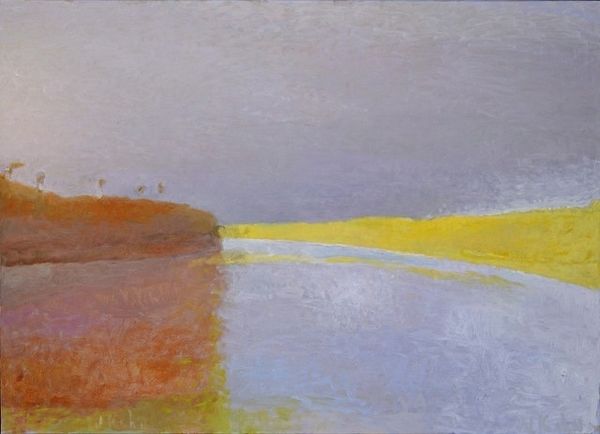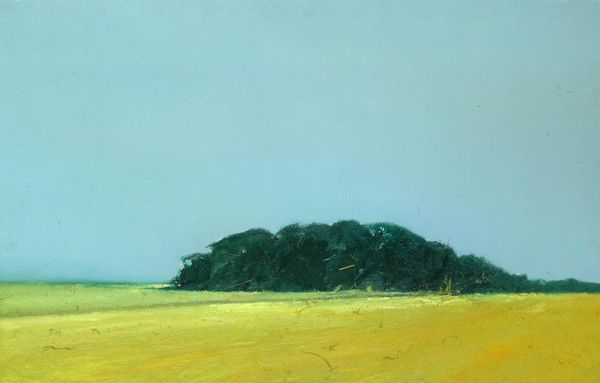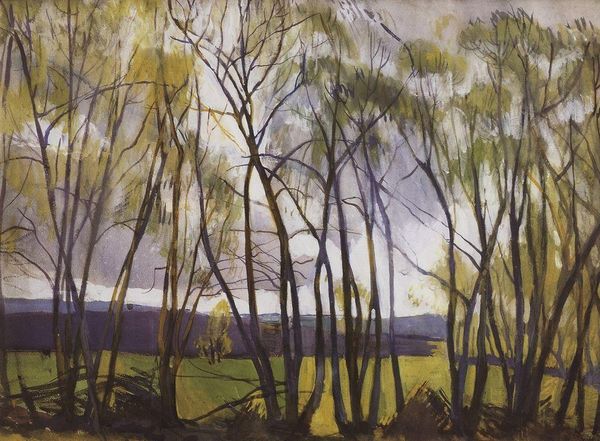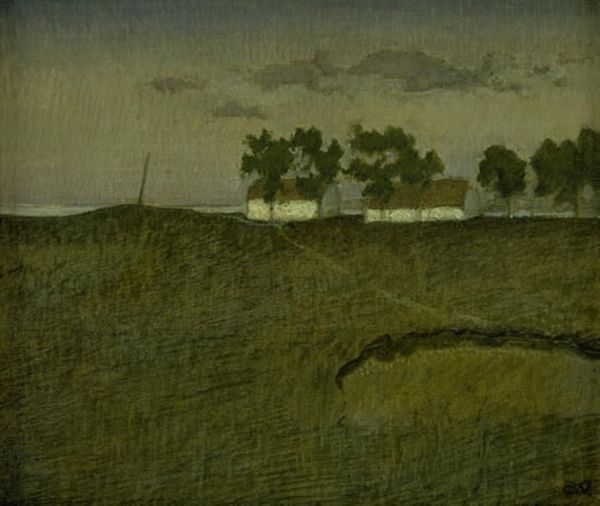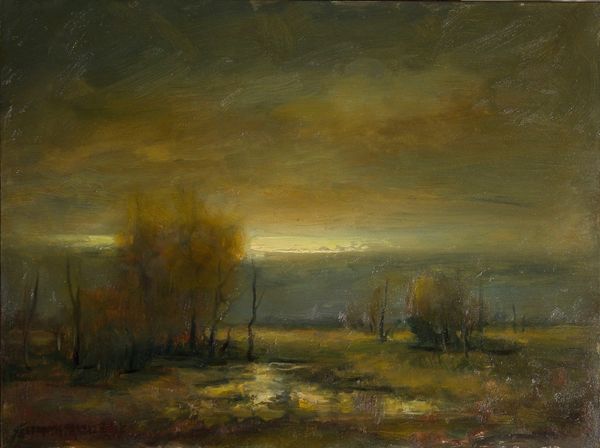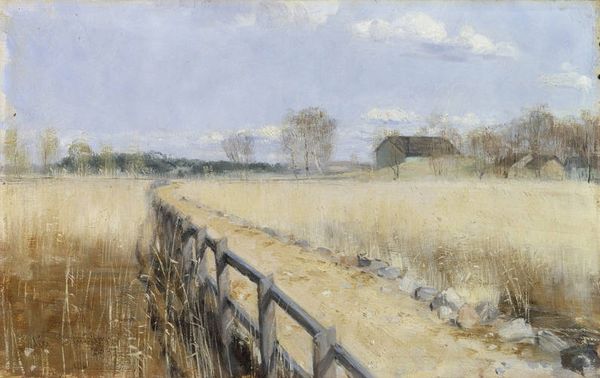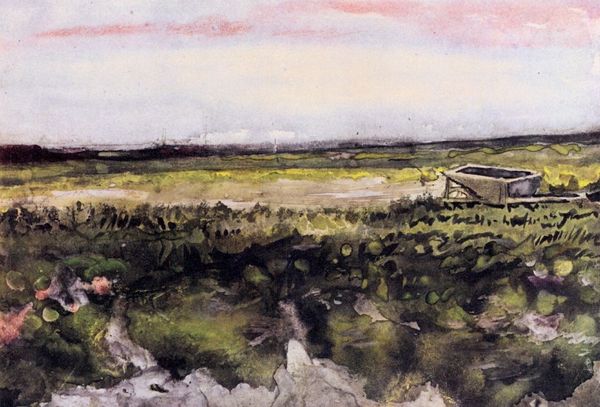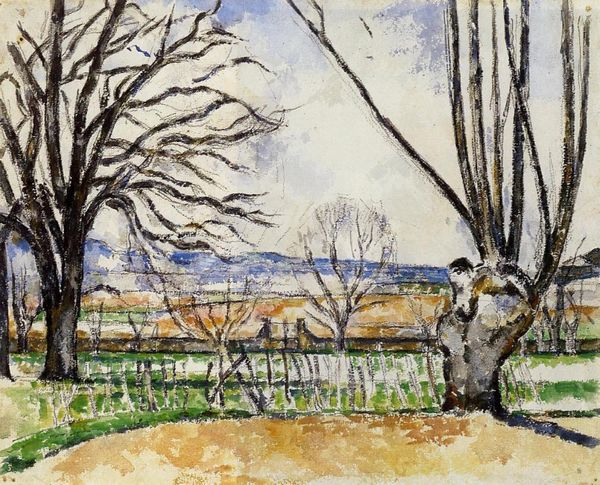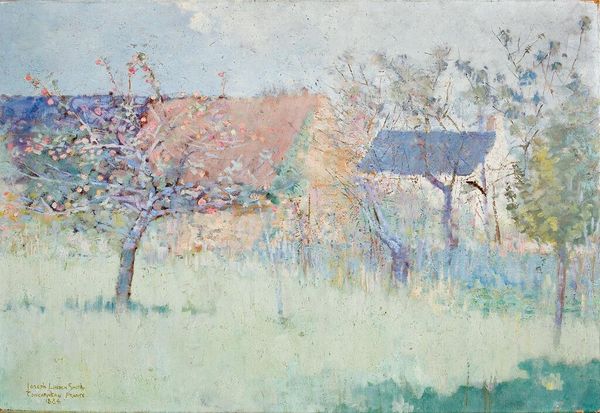
Copyright: Public domain US
Curator: Let's turn our attention to "Orchard," a captivating oil-on-canvas landscape created by Zinaida Serebriakova in 1908. Editor: It's striking, even at first glance. There’s something stark about those bare, almost skeletal, trees against the muted tones of the earth and sky. A real sense of quiet desolation. Curator: Serebriakova, a prominent figure in early 20th-century Russian art, often depicted rural life. This painting showcases her engagement with Post-Impressionism, evident in her brushwork and emphasis on capturing light and atmosphere *en plein air*. Editor: The light here seems…deliberately subdued. What I see is the depiction of working the land. While this painting appears to suggest themes that are both of the everyday and outside of a purely social-realist construction, I still read these formal qualities as part of a kind of implicit feminist resistance. Her focus remains stubbornly trained on domestic scenes, or scenes depicting aspects of labor and what has been called, at least for women, an immutable physical fate. Curator: That's a compelling interpretation. When considering the time period, Serebriakova's choice to focus on these everyday scenes reflects broader artistic trends towards depicting ordinary life. In that context, what's your take on the way Serebriakova portrays the orchard's trees? The application of color to indicate shadows. Editor: Absolutely, in my eyes it’s where the image departs into an altogether distinct modality that escapes from the kind of rural romanticization prevalent at that period. As I mentioned, to me the whiteness represents a deliberate departure from realism. I wonder if she sought to symbolize winter through barren forms or purity in a patriarchal context? Curator: The color certainly pulls you in! Looking at her wider oeuvre though, these motifs tend to show up a lot in portraits, and through the contexts we get more access points. We understand the family ties, gendered accessibilities. In a social art context, you're talking about her experience as a woman operating in a still male-dominated profession in the Tsarist Russia, reflecting not only external observations of peasant life but also deeply internal themes that are important. Editor: Precisely! When we delve into intersectional historical experiences, we see not just a pretty landscape, but perhaps a poignant reflection of labor, class, and gender within the visual and political culture. Curator: Thank you, what a way to appreciate this early canvas in Post-Impressionist painting, and to the many issues Serebriakova’s works and choices raised. Editor: Likewise! We gain such an impactful sense of context for our journey and our considerations.
Comments
No comments
Be the first to comment and join the conversation on the ultimate creative platform.

